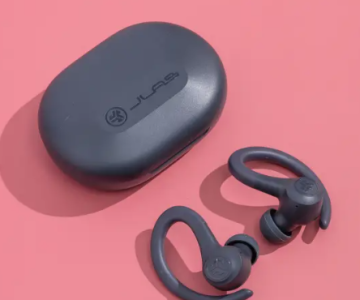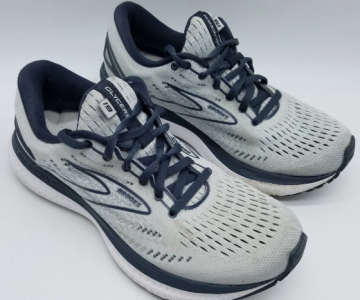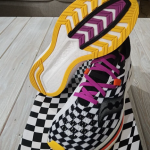As heart-rate tracking technology improves, it’s important to adjust how we use it in our training. Wrist-worn, optical heart-rate sensors offer convenience, but they aren’t perfect. Understanding their limitations—and how to use the data effectively—is key to benefiting from these metrics without getting overwhelmed by them.
Starla Garcia, a 31-year-old runner, found that her Garmin Forerunner 235 often gave her inflated heart-rate readings during easy runs. While external factors like temperature can influence heart rate, research shows that Garcia isn’t alone in experiencing these inaccuracies. A 2017 study revealed that wrist-worn devices were less accurate for certain groups, including men, people with darker skin tones, and those with higher body mass indexes. Environmental factors like altitude and weather conditions can also distort heart-rate readings, according to Neal Henderson, head of sports science at Wahoo Fitness.
So, while tracking heart rate with a wrist device is certainly convenient, it may not be the most reliable way to guide your training. To better understand this, we need to look at how these devices actually work.
How Heart-Rate Tracking Devices Work
There are two primary types of heart-rate monitors: chest straps and wrist-based devices. Chest straps typically measure electrical conductivity in the heart, while wrist and arm devices measure blood flow using optical sensors.
Wrist devices use a method called photoplethysmography (PPG), which detects changes in blood flow. Since blood absorbs green light and reflects red light, optical sensors in these devices emit green light to detect blood flow in the wrist. The more blood flow there is, the more green light is absorbed, allowing the device to calculate heart rate based on these fluctuations.
While this method works fairly well, it’s not as accurate as chest straps. A 2017 study in JAMA Cardiology showed that wrist-based devices often provide less accurate readings than chest straps, especially during exercise. The accuracy of the Apple Watch was better compared to some other wrist-worn devices, but it still fell short of a chest strap.
Similarly, a 2019 study confirmed that chest straps, like the Polar H7, were the closest in accuracy to an electrocardiogram (ECG), while wrist devices like the Apple Watch and Fitbit performed well, but not as accurately.
The Limitations of Wrist-Based Heart Rate Tracking
While wrist-based devices offer greater convenience, they have several drawbacks when it comes to accuracy. One major issue is that many runners rely on heart-rate data to establish training zones, often using maximum heart rate as a baseline. However, determining your max heart rate through a test can be challenging and even risky for some people, such as those new to exercise or with existing health conditions.
Additionally, wrist-based devices are not always effective for all demographics or activities. For example, optical sensors may struggle with darker skin tones or tattoos. High humidity, altitude, and biomechanical changes can also lead to inaccurate readings. Some research suggests that the green light used by these devices isn’t ideal for everyone due to its wavelength, which is more readily absorbed by melanin in darker skin tones.
Alternative Ways to Use Heart Rate Effectively
Despite the limitations of wrist-based heart-rate monitors, these devices can still be valuable tools for personalizing your training. The key is understanding the data, using it appropriately, and not letting it dictate every aspect of your workout.
Training
If you want to track heart-rate data for training purposes, using a chest strap will provide more reliable information. However, it’s essential to interpret this data alongside how your body feels. Running coach Kaitlin Goodman advises runners to trust their bodies. “If your watch says your heart rate is 180 and you feel comfortable, trust yourself,” she says.
Instead of focusing on max heart rate, some runners, like David Roche, prefer to use lactate threshold heart rate (the point at which lactate builds up faster than it can be cleared). This method helps determine the intensity of exercise and can provide more accurate training zones based on individual fitness levels.
Recovery
Heart-rate variability (HRV) is another useful metric for tracking recovery. Devices like Whoop measure HRV to gauge your overall recovery status. A higher HRV indicates better recovery. If your device doesn’t track HRV, you can monitor your resting heart rate (RHR), which is often measured accurately by wrist-based devices. Elevated RHR can be a sign that you need more rest.
Nutrition
Garcia, a registered dietitian, used heart-rate data to monitor her hydration and nutrition levels during training. After noticing discrepancies in her device’s readings, she switched to a chest strap, which gave her more accurate data. During Grandma’s Marathon, for example, Garcia used her heart rate readings to adjust her electrolyte intake based on how she felt, ultimately helping her maintain control over her performance despite rising temperatures.
Where Is Heart Rate Tracking Headed?
Heart-rate tracking technology is still evolving, and manufacturers are working hard to improve accuracy across all skin tones and demographics. Companies like Coros, Apple, and Garmin are investing in more inclusive and accurate optical heart-rate sensors.
Despite its current limitations, heart-rate tracking is a valuable tool when used with care. As Garcia’s experience shows, heart-rate data can help athletes fine-tune their training, recovery, and nutrition strategies. With continued improvements in technology, we can expect even more reliable and useful data to guide our running performance in the future.





